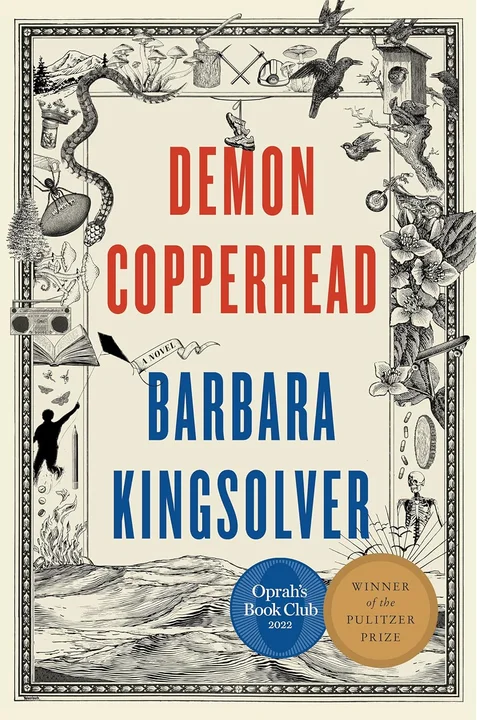
In writing Demon Copperhead, Barbara Kingsolver set out to write her “great Appalachian novel” – and oh boy, did she succeed. Demon Copperhead is a modern reimagination of Charles Dickens’ classic, David Copperfield, but set in Lee County, Virginia in the 1990s and 2000s. Kingsolver’s “David” is young Damon Fields, nicknamed Demon Copperhead for his striking red hair. Demon is born in a single-wide trailer to an 18-year-old mother struggling with addiction and is raised by his village, namely Mr. and Mrs. Peggot, who live next door with their grandson, Demon’s best friend “Maggot.”
Demon’s mother is in and out of rehab, then dies of an overdose on his eleventh birthday, leaving him to grow up in an overcrowded, underfunded foster care system. While much has changed in the nearly two centuries since Dickens wrote David Copperfield, our failure to protect children from the pains of institutional poverty remains tragically the same. Like David, Demon bounces from home to home, suffering in different ways at each, forced to grow up far too quickly. Through all of the hardships, Demon develops a fierce wit and uncompromising will to survive.
Perhaps most impressive is Kingsolver’s ability to develop Demon’s voice and character so thoroughly that the reader nearly becomes him as they read. Demon narrates his own coming-of-age story with sharp humor and perceptiveness, charming the reader and drawing them in to unequivocally root for him.
Among many other things, Demon Copperhead is an exploration of the opioid crisis and the utter devastation it has inflicted upon communities across the United States, and in Appalachia in particular. Kingsolver explained that she wanted to write not about the “big guys” of the opioid epidemic – Purdue Pharma, the Sackler family’s attorneys, the D.E.A. – but the “little people” of the story: the children who lost parents to overdose, the public school teachers and counselors and the grandparents, aunts, and uncles helping raise these kids, and all the individuals whose lives were altered after licensed doctors prescribed highly addictive medications that were aggressively marketed as safe “miracle” pills. Throughout the novel, Kingsolver holds her compassion and anger in poignant tension, underscoring the predatory, greedy wrongdoing of OxyContin’s creators while presenting incredibly human faces of the complex struggles of addiction.
While poverty and addiction play a central role in Demon’s story, Kingsolver – an Appalachian native and resident herself – is careful not to victimize or stereotype the region. Kingsolver weaves the unique history of Appalachia throughout the book, painting a complicated and beautiful picture of resilient, rebellious people and their land. From a young age, Demon understands the value of his close community that looks out for one another. While visiting Knoxville, he is shocked that the city-dwellers “pay zero attention to their neighbors. Not so where I come from, considering just for example how the Peggots had their eye out for me on numerous bad occasions of my life, starting day one.” As he grows up, Demon comes face to face with the stereotypes about Appalachian people that abound in popular culture, pushing back on them with confidence and creativity. “This is what I would say if I could, to all the smart people of the world with their dumb hillbilly jokes,” he says. “We can actually hear you.” I hope Demon’s voice will be heard not only by the folks of Appalachia, who will likely read his tale with tender familiarity, but also by the rest of the country and world that may be tempted to overlook this mountain region and its rich culture.
 Skip to main content
Skip to main content


